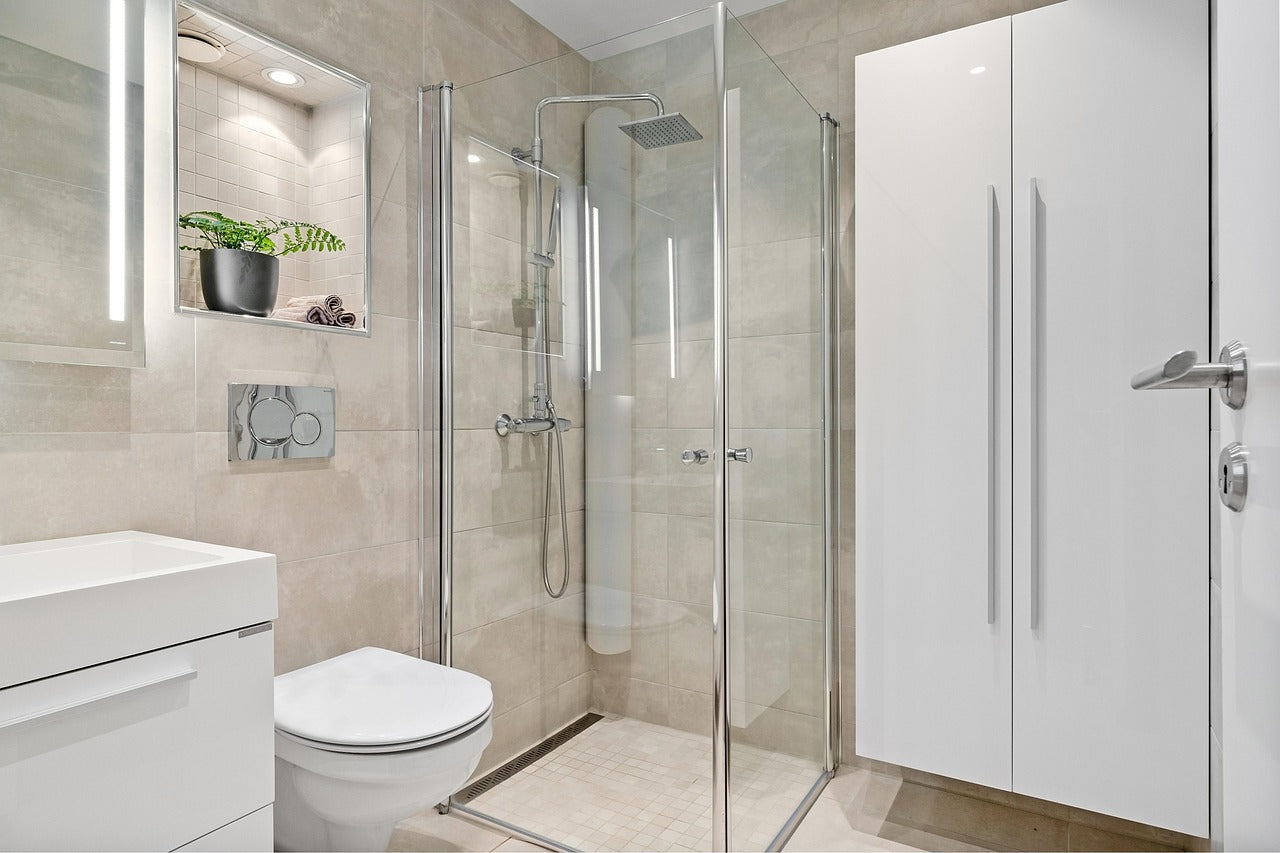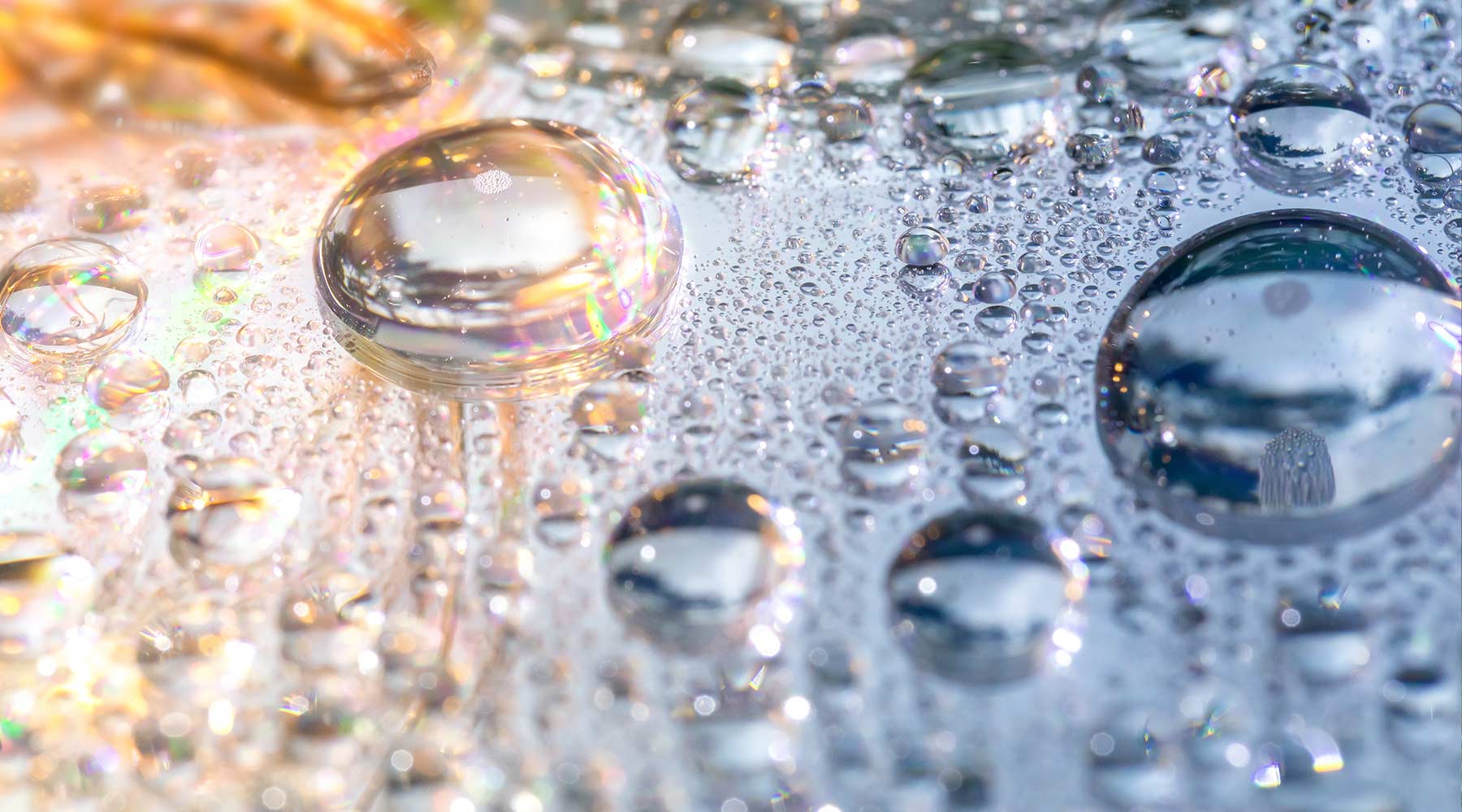Removing limescale is a frustrating issue in the bathroom. The cloudy film on your shower door, white crust on faucets, and stubborn buildup on tiles not only look bad but can also damage fixtures and shorten their lifespan.
The good news? The right approach quickly removes limescale and restores your bathroom's sparkle.
In this guide, we’ll explore why limescale forms, how to remove it from various surfaces, and how to prevent it from returning—with a special focus on products designed to make your job easier, such as DFI Restoration Powder.
What Is Limescale and Why Does It Build Up?
Limescale is primarily composed of calcium carbonate, which is left behind when hard water evaporates. Bathrooms are particularly vulnerable due to their constant exposure to water and high humidity. Limescale is common where water sits and dries:
- Shower doors and enclosures
- Faucets and sink fixtures
- Toilet bowls and tanks
- Tiles and grout lines
Limescale can be unsightly and cause clogs in showerheads, corrosion in faucets, and etching on glass. Tackle it early and often.
General Principles for Removing Limescale
Before jumping into step-by-step methods, keep these basic principles in mind:
- Use acids—such as vinegar, lemon juice, or specialized products—to dissolve minerals in limescale.
- Dwell time is critical. Don’t just spray and wipe. Let the solution sit for 10–30 minutes to allow it to break down deposits.
- Gently scrub with a soft brush or non-abrasive sponge.
- Always rinse thoroughly. Acids can damage finishes if left behind. Flush with clean water after treatment.
- Test cleaners first on hidden spots, especially on stone or colored finishes, to ensure they do not cause damage.
How to Remove Limescale from Different Surfaces
Faucets and Taps
- Soak a cloth or paper towel in vinegar, then wrap it around the base or spout of the item.
- Secure it with a rubber band and let it sit for 30–60 minutes.
- Remove the cloth and scrub gently with an old toothbrush.
- Rinse with warm water and buff with a microfiber cloth.
For stubborn buildup inside faucet aerators, unscrew them and soak in a cleaning solution.
Showerheads
- Detach the showerhead (if possible) and submerge it in a container filled with vinegar or mild descaler for 1–2 hours.
- Use a small brush to clean the nozzles.
- Rinse thoroughly and reattach.
If you can’t remove the showerhead, fill a plastic bag with vinegar, slip it over the head, and tie it with a rubber band. Let it soak overnight, then rinse in the morning.
Glass Shower Doors
Glass doors are often the hardest hit by limescale. Vinegar sprays can help, but they often leave streaks on surfaces. This is where specialized products shine.
DFI Restoration Powder is highly effective for etched or stained glass, removing years of hard water deposits and restoring clarity to the glass. Unlike household acids, this powder cleans and polishes without scratching.
How to use Restoration Powder on glass doors:
- Dampen a sponge or applicator pad.
- Sprinkle a small amount of Restoration Powder on the pad.
- Gently rub in circular motions across the affected areas.
- Rinse thoroughly with clean water.
- Dry with a microfiber cloth for a streak-free shine.
Many homeowners say this restores glass to a like-new appearance when DIY fails.
Tiles and Grout
- Mix equal parts vinegar and water in a spray bottle.
- Spray directly onto tiles and grout lines.
- Let it sit for 20 minutes.
- Scrub grout with a soft brush.
- Rinse and dry.
For heavily stained tile, Restoration Powder can also be used, as it’s safe on many hard, glossy finishes.
Toilets
Toilets develop thick limescale rings, especially with very hard water.
- Pour one cup of vinegar or a descaling solution around the bowl.
- Let it sit for an hour or more (overnight for heavy buildup).
- Scrub with a toilet brush.
- Flush to rinse.
For stubborn deposits below the waterline, empty the bowl first by turning off the water and flushing, then apply your cleaner.
Prevention: Keeping Limescale Away
Removing limescale is only half the battle. Prevention saves time and effort long-term:
Wipe down doors, tiles, and fixtures with a microfiber cloth or squeegee after each shower to keep them clean and fresh. This stops mineral buildup.
Use Protective Coatings
After restoring surfaces, apply a hydrophobic coating to repel water and prevent limescale buildup. Using Restoration Powder with DFI’s coatings both cleans and protects.
Filter or Soften Your Water
In areas with hard water, consider installing a softener or filter to reduce mineral and limescale buildup.
Regular Light Cleaning
Don’t wait for buildup. Wipe or spray surfaces weekly for easier, faster cleaning.
Why Choose ShopDFI Stain Removers?
Household methods work on light buildup, but DFI products tackle stubborn or old deposits.
- Restoration Powder restores clarity to glass, porcelain, and ceramic by breaking down tough mineral deposits and staining that accumulate over time.
- Shop the full line of Stain Removers from ShopDFI to tackle hard water stains, soap scum, and surface etching—each is purpose-built for efficient removal and long-lasting results.
- All products are designed to complement DFI protective coatings, forming a complete cleaning and prevention system that helps extend the life and appearance of your bathroom surfaces.
If your shower door or tile is permanently cloudy, Restoration Powder may restore it.
A Fast 30-Minute Routine for a Sparkling Bathroom
Here’s a simple workflow you can use every month:
- Wrap faucets and taps with vinegar-soaked cloths.
- Soak the showerhead in vinegar or a solution of citric acid.
- Apply Restoration Powder to glass doors and scrub.
- Spray tiles with vinegar and scrub grout.
- Treat the toilet bowl with a descaler.
- Rinse everything thoroughly, wipe it dry, and finish with a squeegee.
This routine, with protective coatings and ShopDFI products, keeps your bathroom scale-free and shiny.
Final Thoughts
Limescale is inevitable in bathrooms with hard water, but it doesn’t have to be permanent. With preventive habits and professional-grade solutions like DFI Restoration Powder, which delivers a deeper clean than ordinary remedies, you can keep your bathroom looking like new without the need for endless scrubbing.
For advanced solutions, explore our full collection of ShopDFI Stain Removers, each formulated to restore and protect every bathroom surface more effectively than generic products.





Leave a comment
This site is protected by hCaptcha and the hCaptcha Privacy Policy and Terms of Service apply.